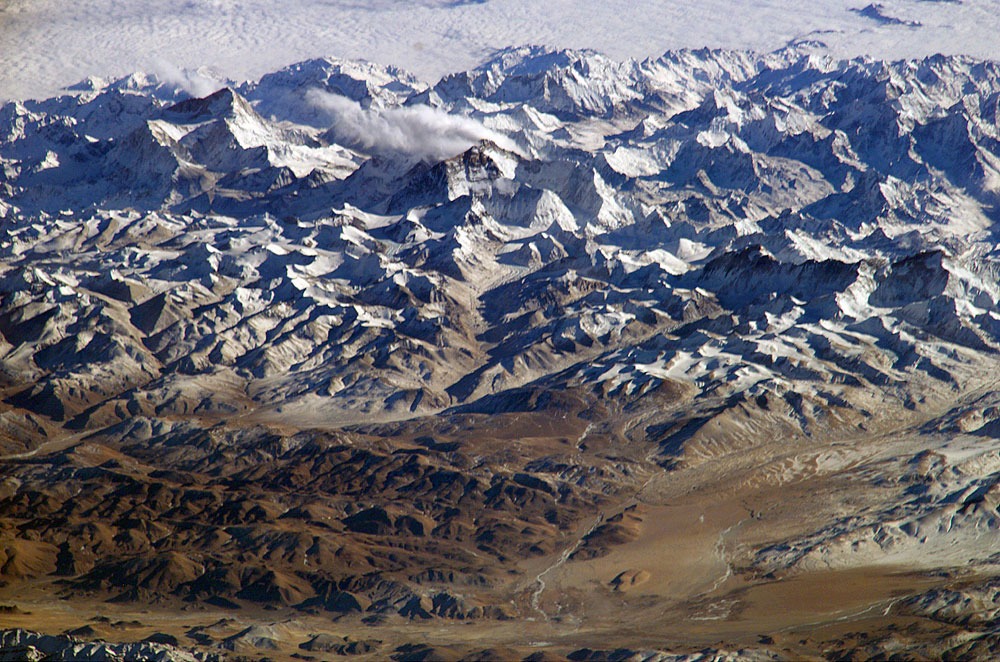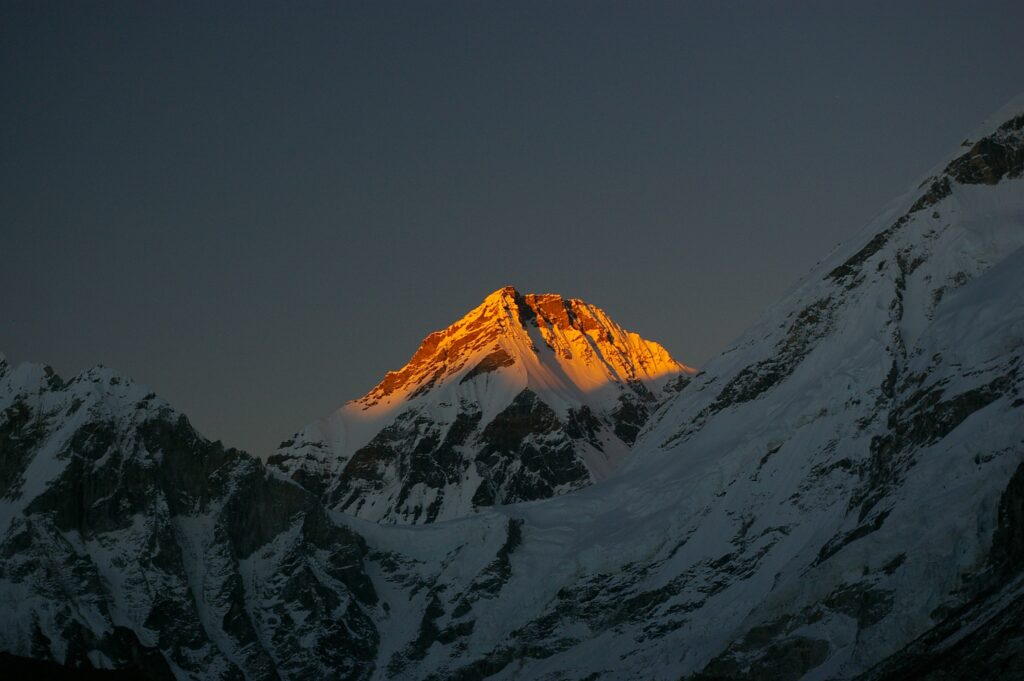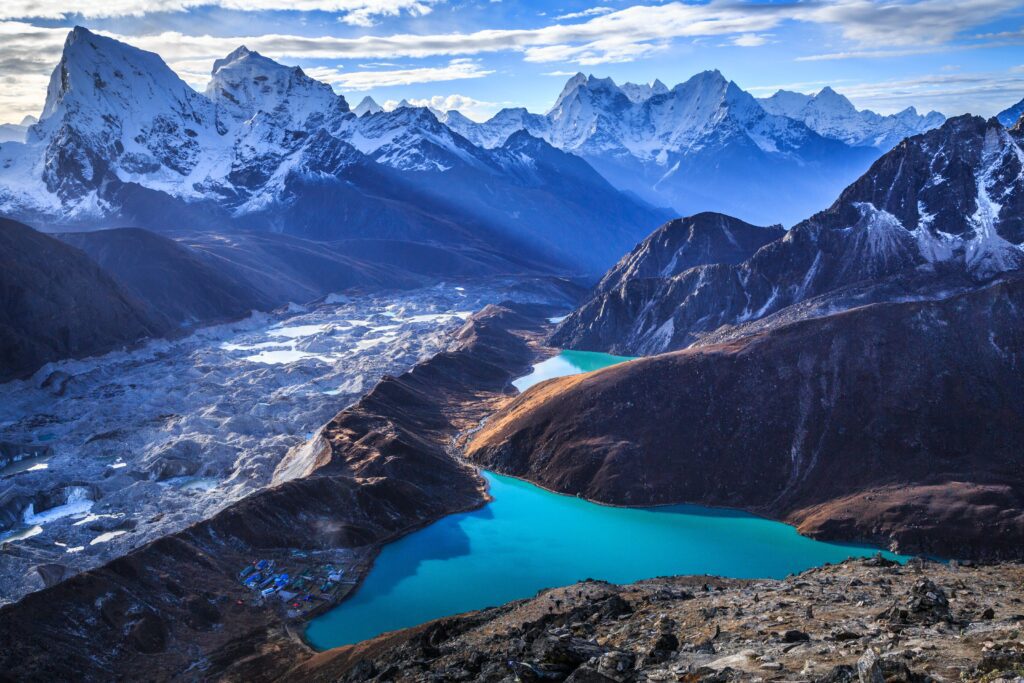Table of Contents
The Name:
The Himalayas comes from two Sanskrit words “himá” meaning snow while “á-laya” means adobe. Considered to be the youngest folded mountain range in the world.
Thank you for reading this post, don't forget to subscribe!Importance of Himalayas:
Geographical Importance:
The Himalayas stand still on four parallel mountain ranges the Sivalik Hills in the south, the Lesser Himalayan range, the Greater Himalayan range and the Tibetian Himalayas in the extreme north. extended from Karakoram and Hindu Kush Range in the west to Namcha Barwa Himal range in the east, being the source of major rivers of South Asia specifically the Indus, the Ganga, the Brahmaputra also known as Yarlung Tsangpo. The Himalayas have a series of the world’s highest mountain peaks which includes Mt. Everest (8848 m), Godwin Austen also known as K2(8607 m), and Kanchenjunga (8586 m) being the top three among others.

Image credit: Wikipedia
Strategic Importance:
The majestic Himalayan mountain range passes through 5 countries namely Pakistan, Nepal, Bhutan, China and India, separating the Indian sub-continent from the Tibetian plateau. Thus dominating this region becomes influential for the major players in this region.

Image credit: Google
Ecological Importance:
The Himalayan region has been recognised as a biodiversity hotspot and contributes to the global ecological balance through hydrologic regulation, climatic control, soil formation, carbon sequestration and recreation.

Image credit: Google
Economic Importance:
Different regions of the Himalayas have extensive and varied economic zones. From animal husbandry, forestry, and tourism to the dwelling of the rarest medicinal herbs the region is valuable. Though restricted to accessible locations, this region also has the potential for mineral exploration.
Religious and Cultural Importance:
The great Himalayas have been the centre of mysticism and spirituality for ages. The region is of utmost importance for Hinduism, Jainism and Buddhism being shelter for a great many saints who visit the region in search of the ultimate truth and liberation.
Though the Himalayas, stand as the crown jewel of our planet, the region is not immune to the pressing challenges that threaten its pristine beauty and ecological balance. Following are a few notable points that explain massive infrastructure development to be a major threat to the zone.

Image credit: Niti Aayog
Threats to the Himalayas:
Deforestation and Biodiversity Loss:
The demand for an increase in infrastructure development and transport systems has led to extensive deforestation in the Himalayan region, dissolving the extremely important ecosystems that support the ecological diversity of flora and fauna.
Endemic species are at risk due to loss of habitat, leading to disturbance of the ecological equilibrium and increasing the potential of their extinction.
Climate Change Amplification:
Calamites like the occurrence of flash floods, cloud bursts, accelerated glacial melts and altered precipitation patterns, are affecting the climate of the entire region.
Pollution due to rapid urbanization and industrialisation also amplifies the global warming effect, leading to a rise in temperature that can forge severe consequences for both the environment and local communities.
Landslides and Soil Erosion:
Majorly caused due to deforestation for various purposes by human activities has started to alter the landscapes by disturbing the natural slopes has enhanced the chances of landslides. This unstable terrain can result in catastrophic events, endangering lives and property along with the natural beauty.
Soil erosion is also a significant threat to the fertility of soil in the Himalayan region leading to hinder the cultivation activities.
Water Resource Challenges:
Various projects on both sides of the Himalayas are disrupting the natural flow of rivers, further impacting aquatic ecosystems and the communities dependent on them.
Changes in the course of the river system can lead to severe downstream consequences, impacting the availability and quality of water for both human and ecological needs.
Cultural and Spiritual Impact:
Unplanned development, rise in tourism along showcasing negative picturisation of the indigenous populations in social media are threatening their traditional ways of life and connection to the land.
Sacred sites and cultural heritage are at risk as their sanctity is getting disturbed by increasing human activities in these revered areas, leading to irreversible damage.
Conclusion:
It is a fact that along with tourism, industrial and infrastructural development is essential for societal progress, but the Himalayas utterly need a delicate and sustainable approach. Maintaining a balance between developmental activities and ecological diversity along with geological conservation is crucial to preserving and conserving the unique biodiversity of the region. Neutralizing the impacts of climate change and protecting the cultural heritage is necessary for the region before it gets too late. The fate of the Himalayas rests in our ability to implement responsible and eco-friendly practices, ensuring that development harmonizes with the delicate ecosystems of this natural wonder.
Source credit: Wikipedia and others.
